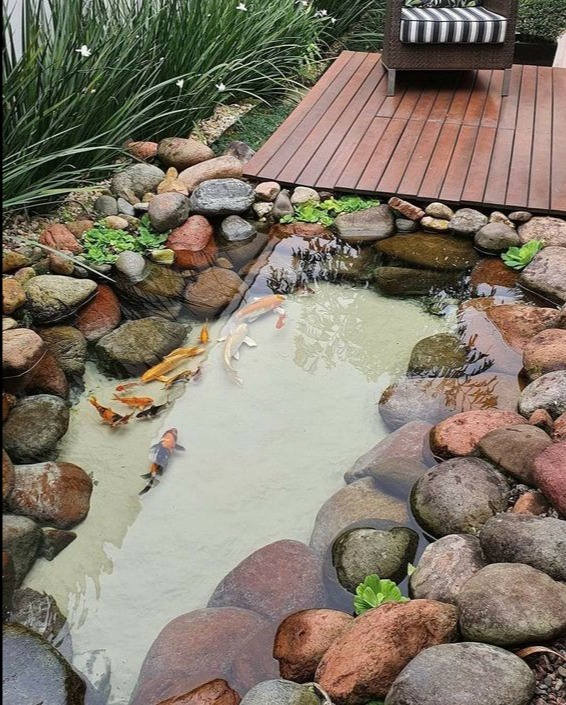
2024-02-20T11:53:43
Using silica quartz as the substrate for the floor of your fish pond can indeed help in keeping the water clear, but there are a few considerations to keep in mind: Filtration: Silica quartz can help in mechanical filtration by trapping debris and particulate matter, thereby preventing them from clouding the water. However, it's essential to ensure that you have adequate filtration systems in place to remove these trapped particles from the water effectively. A combination of mechanical, biological, and possibly UV filtration can help maintain water clarity. Water Chemistry: Silica quartz may affect the pH and hardness of the water, especially if it's in direct contact with the pond water. Test your water regularly to monitor any changes in water chemistry and adjust as necessary to ensure it remains within suitable parameters for your fish and aquatic plants. Compatibility with Fish: Some fish species may not tolerate silica quartz substrate well, especially if they are bottom-dwellers or have sensitive barbels or fins. Make sure the substrate is not abrasive or sharp, which could potentially harm your fish. Maintenance: Keep in mind that silica quartz substrate may require occasional cleaning to prevent the buildup of organic matter and detritus that could contribute to poor water quality. Regular vacuuming or stirring of the substrate can help prevent anaerobic pockets from forming, which can produce harmful gases. Aesthetics: Silica quartz can add a beautiful aesthetic to your pond, giving it a natural and clean look. However, consider other design elements and the overall theme of your pond to ensure that silica quartz complements the rest of the decor. Ultimately, using silica quartz as the substrate for your fish pond floor can be beneficial for maintaining water clarity, but it's essential to consider factors such as filtration, water chemistry, fish compatibility, and maintenance to ensure the health and well-being of your aquatic environment. Removing trapped particles from silica quartz at the bottom of your pond is essential for maintaining water clarity and overall pond health. Here's how you can effectively clean the substrate: Pond Vacuuming: Use a pond vacuum specifically designed for this purpose to clean the silica quartz substrate. Start by slowly moving the vacuum head over the surface of the substrate, being careful not to disturb the plants or disturb the fish too much. The vacuum will suck up the debris and particles trapped in the substrate. Partial Water Changes: Performing regular partial water changes can help remove suspended particles and detritus from the water column, reducing the amount that settles on the substrate. Aim to replace 10-20% of the pond water every week or two, depending on the size of your pond and the stocking levels. Mechanical Filtration: Ensure that your pond filtration system includes mechanical filtration components such as foam filters or filter pads. These filters will capture large particles before they settle on the substrate, reducing the need for manual cleaning. Aeration: Proper aeration can help keep debris and particles suspended in the water column, preventing them from settling on the substrate. Consider installing an aerator or fountain to improve water circulation and oxygenation in your pond. Algae Control: Algae can contribute to poor water clarity and can also trap particles in the substrate. Implement algae control measures such as proper nutrient management, adequate shading, and the use of algaecides if necessary to reduce algae growth. Regular Maintenance: Make cleaning the substrate part of your regular pond maintenance routine. Depending on the amount of debris and the size of your pond, you may need to clean the substrate weekly, bi-weekly, or monthly. Avoid Overfeeding: Overfeeding your fish can lead to excess waste and uneaten food settling on the substrate, contributing to poor water quality. Feed your fish only what they can consume in a few minutes, and remove any uneaten food promptly. By following these steps and maintaining a regular cleaning schedule, you can effectively remove trapped particles from the silica quartz substrate in the bottom of your pond, promoting water clarity and a healthy aquatic environment.

Have a question? Ask here!
Required fields are marked *